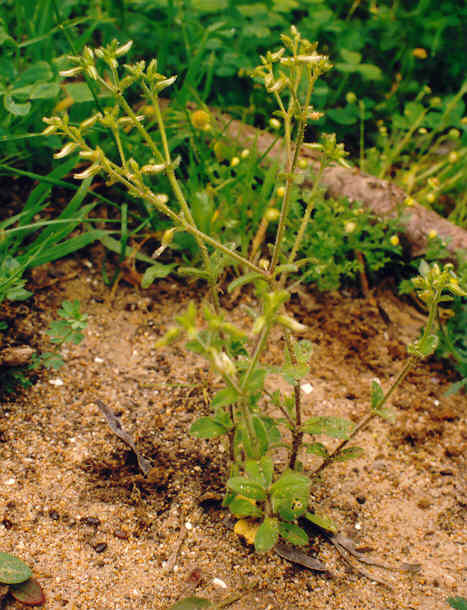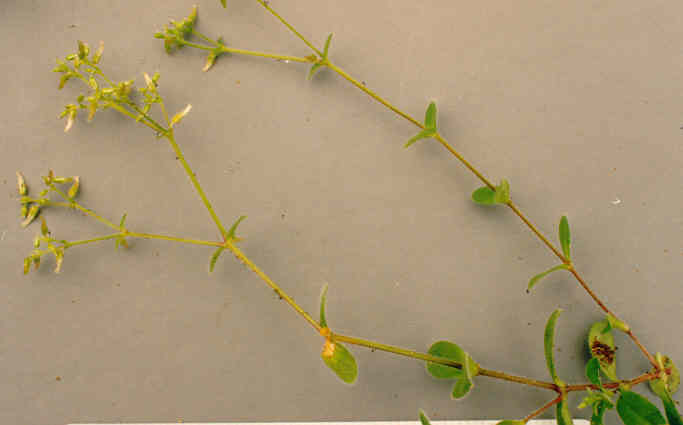
Cerastium glomeratum Thuill.
Caryophyllaceae (Pink Family)
Europe
 |
Cerastium glomeratum Thuill.Caryophyllaceae (Pink Family)Europe
Mouse-ear Chickweed |
March Photo
Plant Characteristics:
Erect annual, viscid, simple to freely branched, 1-3 dm. high; lvs.
elliptic to narrow-obovate, obtusish, hairy, 1-2.5 cm. long; bracts small,
green; infl. a glomerate cyme, lax in age; pedicels scarcely or not longer than
calyx; sepals 5, ovate-lanceolate, sharply acute, with scarious margins, 3.5-4.5
mm. long; petals 5, 2-cleft, ca. as long or slightly shorter than calyx, or
lacking; stamens 10; styles 5; caps. slender
5-9 mm. long, dehiscent at apex by usually 10 teeth; seeds muriculate.
Habitat:
Common in waste places, in pastures, along roads, etc., at low elevations
through most of cismontane s. Calif. Feb.-May.
Name:
Greek, cerastus, horned,
referring to the shape of the capsule. Latin,
glomeris, a ball, round, to amass
together. (Jaeger 111).
Glomeratum, referring to the
rounded inflorescence. (my
comment).
General:
Uncommon in the study area having been found only on the bench
northerly of the Eastbluff burn area. In
1995, a wet year, this plant was found from the cultivated lawns of Eastbluff,
across the bench to nearly the bluff top. (my comments).
A few species grown for edgings and in rock gardens; species variable,
probably about 50 but by some authors described as 100, of world-wide
distribution, most abundant in temperate zones.
(Bailey 371).
C. viscosum misapplied. (Hickman
Ed. 481).
Text Ref:
Hickman, Ed. 481; Munz, Flora So.
Calif. 339; Roberts 18.
Photo Ref:
Mar-April 95 # 6,7.
Identity: by R. De Ruff,
confirmed by John Johnson.
Computer Ref: Plant Data 475.
Have Plant Specimen.
Last Edit 11/16/02.
 |